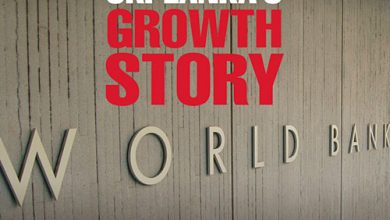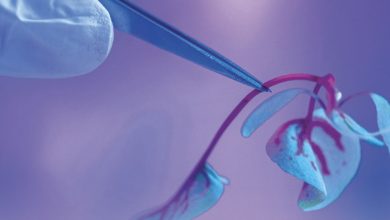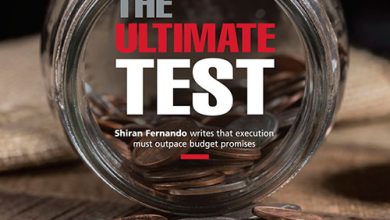POST-COVID ECONOMY
ECONOMIC REOPENING
Shiran Fernando tracks the likely trajectory of the economy in post-COVID times
At the time of releasing the July digital edition of LMD, Sri Lanka has steadily eased curfew restrictions to enable a gradual reopening of the economy. This is a significant achievement for the government and healthcare authorities, who have contained the spread and opened up the country much sooner than the likes of India.
However, the lack of strong economic relief packages could delay a rapid turnaround of the economy.
According to the IMF, at end May, countries had provided fiscal support of close to US$ 9 trillion with 4.4 trillion dollars in terms of direct budget support. The balance was financed through public sector loans, equity injections, guarantees and other quasi-fiscal operations.
G20 countries accounted for 4.5 percent of GDP on average, which is estimated to be higher than during the global financial crisis.
DOMESTIC POLICY In Sri Lanka, the response has primarily been by way of monetary policy and the financial arena. The Central Bank of Sri Lanka cut policy rates (i.e. deposit and lending rates) on four occasions this year and they’re now at historic lows.
It has also reduced the statutory reserve ratio (SRR) and bank ratio to improve liquidity conditions.
The Central Bank also announced relief measures for several major sectors, as well as SMEs and self-employed individuals. Moreover, the Rs. 50 billion ‘Saubagya COVID-19 Renaissance Facility’ was set up with the capacity to provide working capital loans. These loans were scheduled for rollout by the end of June.
With limited fiscal space and no budget in place for 2020, there has been a heavy reliance on monetary policy.
To reduce pressure on the currency, a slew of import restriction measures were put in place to limit nonessential goods and certain items imported either for domestic production or export. While this has reduced import pressures on the currency, the activities of many sectors have been disrupted as they recover from the effects of COVID-19.
RUPEE PRESSURE By end April, the Sri Lankan Rupee had depreciated by more than five percent. However, the currency recovered in May with the spot rate appreciating from 192 rupees to the US Dollar to Rs. 186 to a dollar. Therefore, the Sri Lankan currency has been more resilient compared to that of countries such as India, Indonesia and Thailand, whose currencies have depreciated by between five and seven percent.
The local bill and bond market also witnessed limited foreign outflows in May with offshore holdings only declining by one billion rupees. This represents a reversal of the trend since the beginning of 2020 when foreign holdings declined from Rs. 108 billion to 24 billion rupees by 30 April.
Much of the acceleration of outflows was in March and April, which led to currency weakness. If foreign holdings remain at present levels, it will prove to be a positive sign for the currency going forward.
COVID-19 IMPACT The Purchasing Managers’ Index (PMI) is a major indicator that’s used globally to monitor the health of the economy with PMIs reported for manufacturing as well as services. It is a leading indicator in understanding trends and economic conditions.
In Sri Lanka, the Central Bank has been tracking this index since 2015. The index usually hovers at below 50 in the month of April, which indicates that activity has declined on a month-on-month basis. In April this year, given the impact of COVID-19, the index fell sharply to a historic low.
Manufacturing declined due to a reduction in new orders in particular, stemming from the impact on the apparel industry. Services also fell due to the impact of the curfew, as well as the challenges posed to major service industries such as tourism.
Remittance inflows are also a notable source of dollar earnings for Sri Lanka to bridge its balance of payments deficit with annual inflows of between US$ 6.5 and 7 billion.
In April, remittance inflows dropped by 32 percent to 375 million dollars with the fall mainly on account of difficulties faced in remitting funds due to the lockdowns in other countries and jobs that may have been lost in major migrant markets.
Beyond May, this decline in remittances could be even more pronounced with zero new departures along with the likelihood of further layoffs and lower remittances amid more migrants returning to Sri Lanka in April and May.
RECOVERY PATH The government will need to provide some level of support to segments that are most affected such as the leisure sector. At the same time, the economic recovery will be linked to how consumers react to COVID-19.
If consumers spend less than what they would normally, this may also hurt businesses that rely on such expenditure and thus delay the economic recovery that many are depending on.







